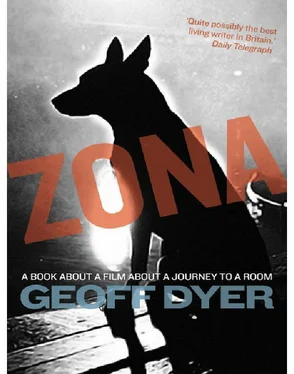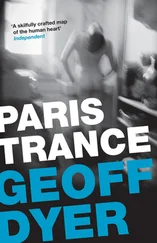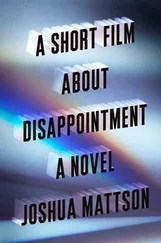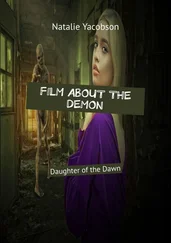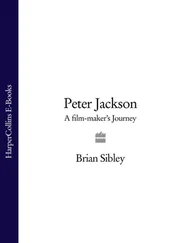The howl dies down and segues into Artemiev’s drifty, enchanted electronica. ‘This isle is full of noises,’ says Caliban in The Tempest. ‘Sounds, and sweet airs, that give delight, and hurt not.’ The sounds in this quietest of places are not simply sweet and, at this point, no one is sure whether they will hurt. They have entered— we have entered — some subtly altered realm of consciousness in which the powers of the Zone can no longer be denied, but neither can they be proved. An amazing place where amazement is vain because everything is normal here.
The camera glides over the grass, the tangled wreckage of metal and, as it tilts upwards we see, some way off — a hundred yards perhaps? — a ruined house, an unusual property which, while difficult of access (as we have seen) and in need of extensive renovation nevertheless has considerable potential for buyers who regard the rest of the world as a prison.
Not that Stalker has any intention of buying, even though it is, in real estate terms, the house of his dreams. He sees it from amid a patch of dense weeds and collapses, first in an attitude of prayer and then on his stomach, into sleep. An ant crawls over his finger. There is no difference between the external world and the world in his head. Everything is reciprocated. He rolls over and, for the first time, the look of anxiety on his face is replaced by the flicker of contentment, even, possibly, of bliss. He has returned to the phenomenal Zone and, in spite of the massive weight of his expectations, it has not disappointed. It is still beautiful. The smell of the flowers may have gone but, unlike Gatsby, who is forced to accept the colossal vitality of his illusion, Stalker is still able to believe, to give himself totally to his idea of perfection. He may not be holding his hands together and muttering verses from some sacred text but for Stalker the rapture he feels at this moment is a form of prayer as defined by William James in The Varieties of Religious Experience: the soul ‘putting itself in a personal relation with the mysterious power of which it feels the presence.’
It will do no good if I keep saying that this sequence is among the greatest in cinema history, that this bit is profoundly moving. Those words serve as running heads for almost every page of this book and they apply to so many parts of the film that, from now on, I will try to refrain from using them. But there is no getting away from it: I find this scene, where we witness Stalker’s relief and share his bliss (I have been back to this cinematic Zone many times and have never been disappointed) so intensely moving that I cannot watch it without tears coming to my eyes. I’m worried that I’m overusing this tears-coming-to-the-eyes stuff but these are the facts and the fact of my tears — here and at Burning Man — is proof of the profundity of the experience that provokes them. In Diary of a Bad Year, J. M. Coetzee finds himself ‘sobbing uncontrollably’ when he rereads a passage from The Brothers Karamazov. ‘These are pages I have read innumerable times before, yet instead of becoming inured to their force I find myself more and more vulnerable before them. Why?’ That’s how I feel about Stalker, so I thought I’d ask that same question, to try to articulate both the film’s persistent mystery and my abiding gratitude to it.
WRITER AND PROFESSOR, meanwhile, are not totally convinced. Far from it. Professor (i.e., a man used to lecturing) explains that a meteorite fell here about twenty years ago. Or maybe it wasn’t a meteorite. Whatever it was, something happened here to cause it to become abandoned. The paradox of abandonment soon kicked in: anywhere abandoned serves as a magnet. In cities unoccupied houses become crack dens; empty warehouses become venues for illegal parties. Leckhampton station became an unofficial adventure playground for my friends and me. People came here and started disappearing, Professor continues. The authorities surrounded the Zone with barbed wire to stop people coming (again, that mirror image of the Gulag: a place surrounded by barbed wire not to keep people in, but to keep them out). More generally, the Zone looks back to a vision of the future — another paradox — sketched in 1946 by the Swiss writer Max Frisch as he surveyed the devastation of postwar Europe. ‘This is what exists, the grass growing in the houses, the dandelions in the churches, and suddenly one can imagine how it might all continue to grow, how a forest might creep over our cities, slowly, inexorably, thriving unaided by human hands, a silence of thistles and moss, an earth without history, only the twittering of birds, spring, summer and autumn, the breathing of which there is no one to count any more.’
Tremors from the future can be felt throughout Stalker. In less than a decade Professor’s summary of how the Zone came into existence had taken on the aura of a premonition fulfilled, and Stalker acquired yet another dimension of suggestiveness: in its foreshadowing of the 1986 disaster at Chernobyl, in Ukraine. Tarkovsky was not only a visionary, poet and mystic — he was also a prophet (of a future that now lies in the past).
The damaged reactor and much of the radioactive material at Chernobyl were sealed in a huge concrete ‘sarcophagus’. Nearby towns such as Pripyat were evacuated and a thirty-kilometre Zone of Exclusion was established around the plant. Like Stalker’s child — a Zone victim, as Professor explains — large numbers of the children of parents who lived near Chernobyl had birth defects. After the evacuation the Zone of Exclusion was littered with the rusting remains of vehicles that had been used as part of the emergency cleanup. Plants stitched the empty roads and cracked concrete. Trees thrust through the warped floors of derelict buildings. Leaves changed shape. Veg-etation clambered up the crumbling walls of abandoned homes. Photographs taken by Robert Polidori of Pripyat and Chernobyl in 2001 (and collected in his book Zones of Exclusion) look like stills from a retrospective location shoot from the set of Stalker. 20Except it might not be quite as simple as Polidori and others documenting a world which had come to resemble a film made thirty years earlier. It could be that the photographers’ aesthetic — their tacit sense of what they were looking for — was partly formed by Stalker, so that the film has helped generate and shape the observed reality that succeeded it.
Rumours began to circulate that within the Zone there was another place (in any magical realm there is always a deeper recess or chamber of more powerful magic) where your wishes could come true. There you have it. In the most concise form imaginable, Professor has outlined the birth of a myth and religion: a place where something may or may not have happened; a place with a power that was intensified — possibly even created — by being forbidden. That’s certainly the view of another professor, good old Slavoj Žižek, who reckons that the cordoning off is the defining aspect of the Zone: ‘What confers on it the aura of mystery is the Limit itself, i.e. the fact that the Zone is designated as inaccessible, as prohibited.’ In a classic Žižekian bit of reverse dialectics, ‘the Zone is not prohibited because it has certain properties which are “too strong” for our everyday sense of reality, it displays these properties because it is posited as prohibited. What comes first is the formal gesture of excluding a part of the real from our everyday reality and of proclaiming it the prohibited Zone.’
Irrespective of how it was created, a cult grew around this Zone. Special powers were ascribed to it. Did it have these powers? It is not made clear. But the belief that such a thing or place exists can bring it into existence — as with the Unicorn in one of Rilke’s Sonnets to Orpheus: the animal that never was, but was loved just the same. That love, the love of the people who loved this thing that had not been, created a space in which it might be:
Читать дальше
